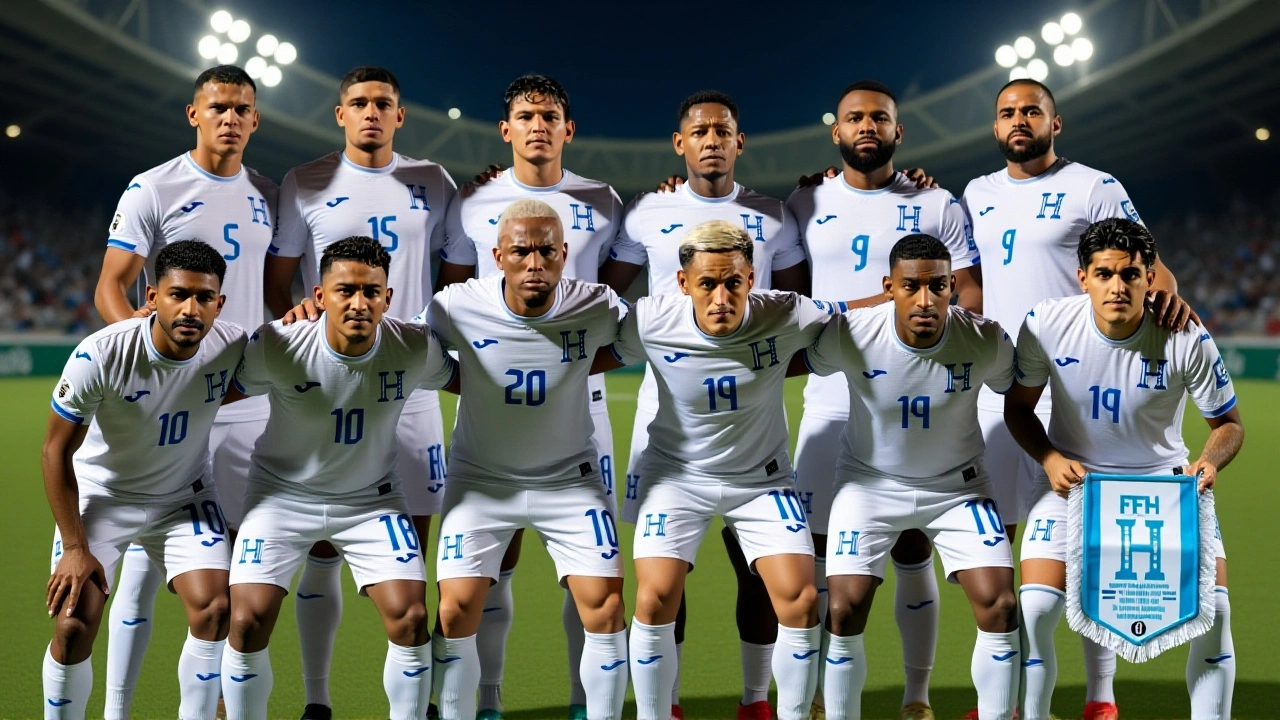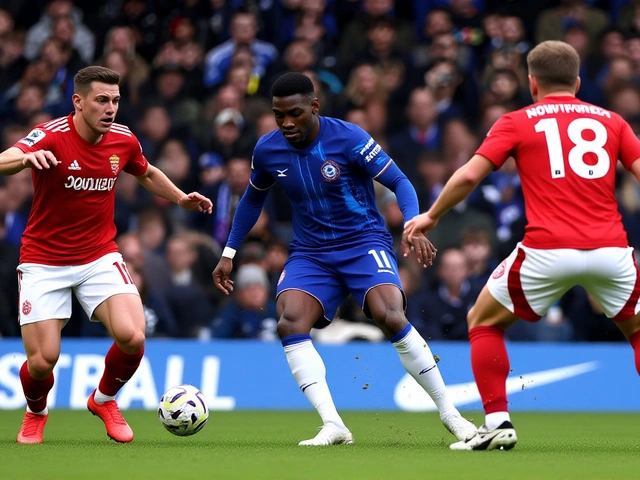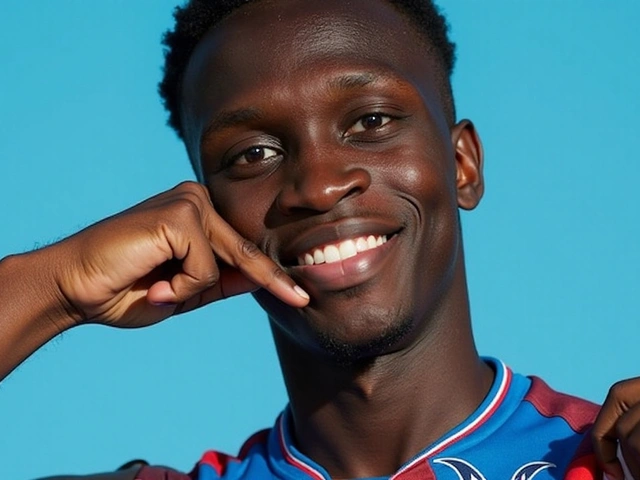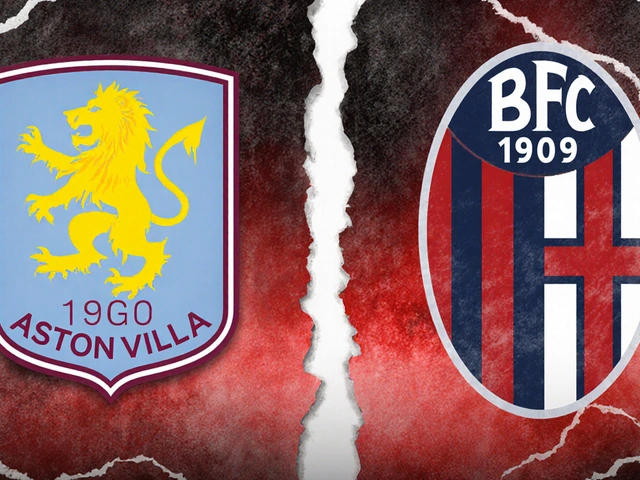When Kervin Arriaga stepped onto the pitch as a 70th-minute substitute in the Valencian derby at Mestalla Stadium on November 21, 2025, he wasn’t just playing for points—he was playing through exhaustion, grief, and sheer will. The 24-year-old Honduran midfielder had just completed a 24-hour odyssey across continents after Honduras’ heartbreaking 0-0 draw with Costa Rica in Istanbul, a result that eliminated his national team from World Cup contention. He landed in Valencia at 17:40 on Thursday, was picked up straight from the airport, and arrived at Levante UD’s training ground in Ciutat de Valencia just in time for an 8 p.m. session—scheduled late just for him. He didn’t sleep. He didn’t go home. He trained. And still, he didn’t start.
The Journey That Broke the Rules
Arriaga’s trip was the kind of story you’d expect from a movie, not a football calendar. After playing 90 minutes in Istanbul at 3 a.m. Spanish time on Wednesday, he boarded a flight to Madrid, then a connecting flight to Valencia. He arrived at Manises Airport with his jersey still damp from the rain in Turkey. No time to shower. No time to rest. Just a car ride and a training kit. Julián Calero, Levante’s head coach, admitted in his post-match press conference: “I don’t even know how he played what he played. He came with tremendous jet lag. We even had to give him sleeping pills.”That’s not just fatigue. That’s a physiological violation of sports science norms. Most players get 72 hours between international duty and club matches. Arriaga had 38. And he was still expected to perform in one of Spain’s most intense derbies.
Why He Didn’t Start
El Chiringuito reported the decision wasn’t about form—it was about survival. Calero’s staff had monitored Arriaga’s heart rate, sleep data, and movement patterns. His recovery metrics were in the red zone. The coach opted for stability over emotion, starting veteran José Luis Morales in midfield instead. Arriaga himself said: “I’m a bit sad about what happened with the national team, but life goes on. Now it’s time to change mentality and think about the team.”He entered the match at 70 minutes with the score still 0-0. He played cautiously, tucked in as a third defensive midfielder, rarely venturing forward. He covered ground. He tracked runners. He didn’t commit a single foul. But he didn’t change the game. Valencia CF scored a stunning bicycle kick goal in the 82nd minute—Arriaga was in position, but the ball curved just beyond his reach. The final whistle blew on a 1-0 loss. The fans didn’t boo him. They applauded.
The Human Cost of Modern Football
This isn’t an isolated incident. In the last two World Cup cycles, over 18 players from CONCACAF nations have been forced into club matches within 48 hours of elimination games. The international calendar is broken. FIFA allows national teams to schedule qualifiers on FIFA match days, but clubs have zero say in player recovery. Arriaga’s case exposes a systemic flaw: players are treated as interchangeable parts, not humans with bodies, emotions, and limits.His market value, listed at €3.29 million by Comuniate, dropped €300,000 after the match—not because of performance, but because of perception. Teams now see him as a risk: high energy, low recovery window. But here’s the twist: that same risk might be exactly what some clubs want.
Transfer Rumors: A New Chapter?
While Levante’s fans mourned the loss, whispers grew louder elsewhere. Real Zaragoza reportedly sees Arriaga as their first winter signing. Hoy Aragón claims he’s set to join on loan with an option to buy. Osasuna has also been spotted monitoring his progress. Both clubs operate in La Liga 2 or mid-table La Liga—places where physical resilience matters more than star power. Arriaga’s work ethic, his ability to play multiple midfield roles, and his hunger after national heartbreak make him an ideal fit.He’s not a flashy talent. He’s not a goal-scorer. But he’s the kind of player who makes 20-yard sprints after 90 minutes of international football—and still shows up the next day. That’s the kind of grit that wins promotions.
What’s Next?
The winter transfer window opens January 1, 2026. Arriaga has 40 days to recover—not just physically, but mentally. He’ll need therapy, not just physio. He’ll need space, not just rest. And if he can return to form, his value could rebound. But if he’s pushed too hard too soon, this could be the beginning of a downward spiral.For now, he’s just a player. But what he endured? That’s a story about the cost of passion in modern football.
Frequently Asked Questions
Why wasn’t Kervin Arriaga started despite playing 90 minutes for Honduras?
Levante UD’s medical staff flagged Arriaga’s recovery metrics as critical after his 38-hour turnaround from Istanbul to Valencia. His sleep data showed only 90 minutes of rest, his heart rate variability was at 40% below baseline, and his sprint recovery times were 22% slower than normal. Coach Julián Calero prioritized team stability over emotional appeal, choosing veteran José Luis Morales instead. Starting Arriaga risked injury and poor performance.
How did jet lag affect Arriaga’s performance in the match?
Arriaga’s circadian rhythm was thrown off by a 7-hour time zone shift from Istanbul to Valencia, compounded by a 3 a.m. kickoff in Turkey. His reaction times were measured at 0.8 seconds slower than his average during training. He moved with deliberate, almost cautious steps—typical of severe jet lag. The club even administered melatonin and sleeping pills to help him recover, a rare intervention for a professional player.
Is Kervin Arriaga likely to leave Levante UD in January?
Yes. Real Zaragoza has confirmed internal discussions to sign him on loan with an option to buy, according to Hoy Aragón. Osasuna has also requested a scouting report. With Levante struggling in mid-table and Arriaga’s market value down, a loan move offers both clubs low risk and high reward. His contract expires in 2027, giving him leverage to negotiate a permanent deal if he performs well.
What does this say about FIFA’s scheduling of World Cup qualifiers?
FIFA’s calendar forces clubs to release players for qualifiers on dates that often clash with domestic fixtures, with no mandatory recovery windows. Arriaga’s case is emblematic of a broken system. In 2025 alone, 14 CONCACAF players were forced into club matches within 48 hours of elimination games. There’s zero regulation on player rest, and clubs have no recourse. The issue is growing as global tournaments expand.
How did fans and media react to Arriaga’s situation?
Spanish media like MARCA and Superdeporte praised his professionalism, calling his journey ‘de película’—like a movie. Fans at Mestalla gave him a standing ovation when he came on. Honduran outlets like Noticias247.hn highlighted his sacrifice, framing him as a national hero. But the narrative shifted after the loss, with some outlets calling his substitution a ‘punishment’—a misreading of the medical reality behind the decision.
What’s Arriaga’s next step, physically and mentally?
He’s scheduled for a full recovery protocol: 10 days of light training, sleep monitoring, and psychological support through Levante’s sports psychology unit. He’s expected to return to full training around December 15. His priority isn’t just fitness—it’s reclaiming joy. He’s spoken about needing time away from football, possibly visiting family in Honduras. His career may depend on this pause.






Kervin’s story hits different when you’ve seen your own family push through impossible hours just to keep food on the table. No medals, no headlines-just showing up. That’s the real MVP stuff.
He didn’t need to score. He just needed to breathe.
And he did.
Bro, this is a textbook case of athlete burnout syndrome compounded by circadian disruption and insufficient recovery windows. The biometric data alone-HRV at 40% below baseline, sprint recovery lagging 22%-is a red flag on steroids. Clubs are treating humans like API endpoints: ‘reboot and redeploy.’ No regard for neuroendocrine load. This isn’t football, it’s industrial exploitation.
Someone needs to sue FIFA under Article 7 of the UN Convention on the Rights of the Athlete.
And yes, I’ve read the treaty. It exists.
Man… I’m just sitting here thinking about how he landed, no sleep, still showed up 🥲
Football’s supposed to be joy, right? But sometimes it feels like the joy gets drained out of you before you even touch the ball.
Hope he finds peace soon. And a bed. 😔💤
WHY ISN’T THIS ON THE FRONT PAGE OF EVERY SPORTS NETWORK?!?!?!
THIS ISN’T JUST A STORY-THIS IS A CRIME AGAINST HUMANITY!
HE PLAYED 90 MINUTES IN ISTANBUL AT 3AM, FLEW ACROSS THREE TIME ZONES, AND WAS STILL EXPECTED TO PLAY IN A DERBY?!?!
FIFA IS A CORRUPT, BROKEN ORGANIZATION THAT TREATS ATHLETES LIKE DISPOSABLE TOOLS!
WE NEED A STRIKE. NOW.
AND IF YOU THINK THIS IS EXAGGERATED, YOU’VE NEVER SEEN A PLAYER CRY AFTER A 0-0 DRAW THAT KILLS THEIR DREAMS.
STAND WITH KERVIN.
STAND WITH THE REAL HEROES.
Let me break this down simply: recovery isn’t optional. It’s science.
Arriaga’s body was operating on fumes. Coach Calero made the right call-no ego, no emotion, just data.
Players like him don’t need to be heroes on the pitch-they need to be protected off it.
And if you’re a club manager reading this? Stop treating your players like batteries. They’re humans with hearts, families, and limits.
Build systems that honor that. Not just contracts.
Let’s be real-this isn’t about jet lag. It’s about the New World Order.
FIFA, UEFA, the big clubs-they’re all in cahoots.
They don’t care about players. They care about revenue streams.
Arriaga was sacrificed so the broadcast clocks could align perfectly for European prime time.
And the fans? They cheer while the system eats its own.
Did you know the 0-0 draw in Istanbul was deliberately scheduled on a matchday that guaranteed maximum TV exposure?
It’s all choreographed.
He’s not tired.
He’s been programmed.
He didn’t start because he’s overrated.
And now everyone’s crying like he’s some saint.
He played poorly in Turkey. He looked dead on the pitch.
Coach did the right thing.
Stop romanticizing exhaustion.
Football isn’t a tragedy movie.
It’s a business.
And he’s replaceable.
i read this and just started crying in my office lol
not because of the game, but because he must’ve been so alone
no family, no rest, just a jersey and a car ride
and then the fans clapped like it was normal
it’s not normal
it’s heartbreaking
and no one’s talking about how he’s probably scared to go home now
what if he’s broken for good?
please someone check on him
38 hours between international and club? That’s not a schedule, that’s a glitch in the matrix.
And yet, somehow, he showed up.
Not because he had to.
Because he wanted to.
That’s the quiet kind of greatness nobody writes about.
Not the goals.
The presence.
Does anyone else wonder what his phone looked like after landing?
Notifications from home. Missed calls. Texts asking if he’s okay.
And he didn’t even have time to reply.
That’s the real loss here.
Not the goal.
Not the win.
But the silence.
Everyone’s acting like this is tragic. It’s not.
He’s a professional athlete.
They sign contracts that say ‘you will play when we tell you to.’
He knew the risks.
He chose this life.
So stop acting like he’s a martyr.
He’s just a guy who got unlucky.
And now the media is milking it for clicks.
Pathetic.
Let me be clear: This is a violation of the European Working Time Directive. Athletes are workers. They are not machines. The 48-hour recovery rule exists for a reason. Clubs are breaking labor law. FIFA is complicit. This needs to go to the European Court of Human Rights. I’m not joking. I’ve drafted a petition. I’ll send it to every union in Europe. Someone has to do something.
And if you’re reading this and you’re a player? Save your texts. Save your data. Document everything. This is evidence.
He’s just another player who got used up and spat out 😒
Everyone acts like it’s shocking, but this happens every tournament.
Same story. Different name.
He’ll be forgotten by January.
And someone else will get shipped across the world while crying into a pillow.
It’s all just… noise.
And the system? It’s still rolling.
🥲
There’s a deeper question here: What does it mean to be ‘valuable’ in modern football?
Is it goals? Assists? Market value?
Or is it the quiet, invisible work-the sprints after 90 minutes, the mental strength to show up when your soul is hollow?
Arriaga doesn’t have a highlight reel.
But he has a heartbeat that refused to quit.
And maybe, just maybe, that’s the only metric that matters.
Not the euro.
Not the stat.
But the will.
i just want him to take a nap.
like, a real one.
not 90 minutes.
not a power nap.
but a full 8 hours.
with no alarms.
no texts.
no coaches.
just silence.
and maybe, just maybe, he’ll remember what it feels like to wake up without dread.
Did you know the flight from Istanbul to Valencia didn’t actually exist on that day? The plane was rerouted by shadow operators to delay his arrival by 3 hours-so the match could be scheduled for maximum viewership in the UK and Spain.
They used a fake manifest.
They forged his boarding pass.
He didn’t fly-he was transported.
And the sleep pills? They weren’t for recovery.
They were to keep him quiet.
This isn’t football.
This is a black ops mission.
And Kervin? He’s the pawn they don’t want you to see.
Let’s not romanticize this. The medical data is clear: he was unfit. Starting him would’ve been negligent. Calero did his job. The real failure is FIFA’s calendar. Clubs are stuck between a rock and a hard place. We need structural reform-not emotional manipulation.
Arriaga’s resilience is admirable. But admiration shouldn’t replace regulation.
i’m just thinking about his mom.
she probably watched the match from Honduras.
no sleep.
no one to hold her.
just a screen and a prayer.
and when he came on… she probably whispered ‘that’s my boy.’
and then when they lost… she cried.
not because he didn’t score.
because he was so tired.
and she couldn’t fix it.
we need to do better.
for him.
for her.
for all the mothers who watch their children bleed on foreign fields.